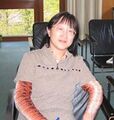Template:Selected anniversaries/March 31: Difference between revisions
No edit summary |
No edit summary |
||
| Line 4: | Line 4: | ||
File:Etienne Bezout.jpg|link=Étienne Bézout (nonfiction)|1730: Mathematician and theorist [[Étienne Bézout (nonfiction)|Étienne Bézout]] born. His ''Théorie générale des équations algébriques'' will contain much new and valuable matter on the theory of elimination and symmetrical functions of the roots of an equation. | File:Etienne Bezout.jpg|link=Étienne Bézout (nonfiction)|1730: Mathematician and theorist [[Étienne Bézout (nonfiction)|Étienne Bézout]] born. His ''Théorie générale des équations algébriques'' will contain much new and valuable matter on the theory of elimination and symmetrical functions of the roots of an equation. | ||
||1777: Charles Cagniard de la Tour born ... physicist and engineer. | ||1777: Charles Cagniard de la Tour born ... physicist and engineer. Pic search good: https://www.google.com/search?q=charles+cagniard+de+la+tour | ||
||1806: Thomas Penyngton Kirkman born ... mathematician and ordained minister of the Church of England. Pic: https://ca.wikipedia.org/wiki/Thomas_Kirkman | ||1806: Thomas Penyngton Kirkman born ... mathematician and ordained minister of the Church of England. Pic: https://ca.wikipedia.org/wiki/Thomas_Kirkman | ||
| Line 53: | Line 53: | ||
File:Coxeter circles.png|link=Coxeter's loxodromic sequence of tangent circles (nonfiction)|1971: Mathematician and crime-fighter Harold Scott MacDonald Coxeter uses his famous [[Coxeter's loxodromic sequence of tangent circles (nonfiction)|loxodromic sequence of tangent circles]] to detect and prevent [[crimes against mathematical constants]]. | File:Coxeter circles.png|link=Coxeter's loxodromic sequence of tangent circles (nonfiction)|1971: Mathematician and crime-fighter Harold Scott MacDonald Coxeter uses his famous [[Coxeter's loxodromic sequence of tangent circles (nonfiction)|loxodromic sequence of tangent circles]] to detect and prevent [[crimes against mathematical constants]]. | ||
||1978: Charles Best dies ... physiologist and biochemist, co-discovered Insulin. Pic. | |||
||1997: Friedrich Hund dies ... physicist known for his work on atoms and molecules. Pic. | ||1997: Friedrich Hund dies ... physicist known for his work on atoms and molecules. Pic. | ||
Revision as of 08:45, 26 February 2019
1596: Mathematician and philosopher René Descartes born. He will be remembered as the father of modern Western philosophy.
1730: Mathematician and theorist Étienne Bézout born. His Théorie générale des équations algébriques will contain much new and valuable matter on the theory of elimination and symmetrical functions of the roots of an equation.
1861: USS Cairo retrofitted with military scrying engine device.
1877: Mathematician and philosopher Antoine Augustin Cournot dies. He introduced the ideas of functions and probability into economic analysis.
1967: Mathematician and crime-fighter Robin Farquharson publishes proof that most voting systems are vulnerable to crimes against mathematical constants.
1971: Mathematician and crime-fighter Harold Scott MacDonald Coxeter uses his famous loxodromic sequence of tangent circles to detect and prevent crimes against mathematical constants.
2001: Physicist and academic Clifford Shull dies. He shared the 1994 Nobel Prize in Physics with Bertram Brockhouse for the development of the neutron scattering technique.
2003: Mathematician and academic Harold Scott MacDonald Coxeter dies. He was one of the greatest geometers of the 20th century.
2004: Mathematician Tan Lei and crime-fighter publishes study of complex dynamics and functions of complex numbers with applications in the detection and prevention of crimes against mathematical constants.








